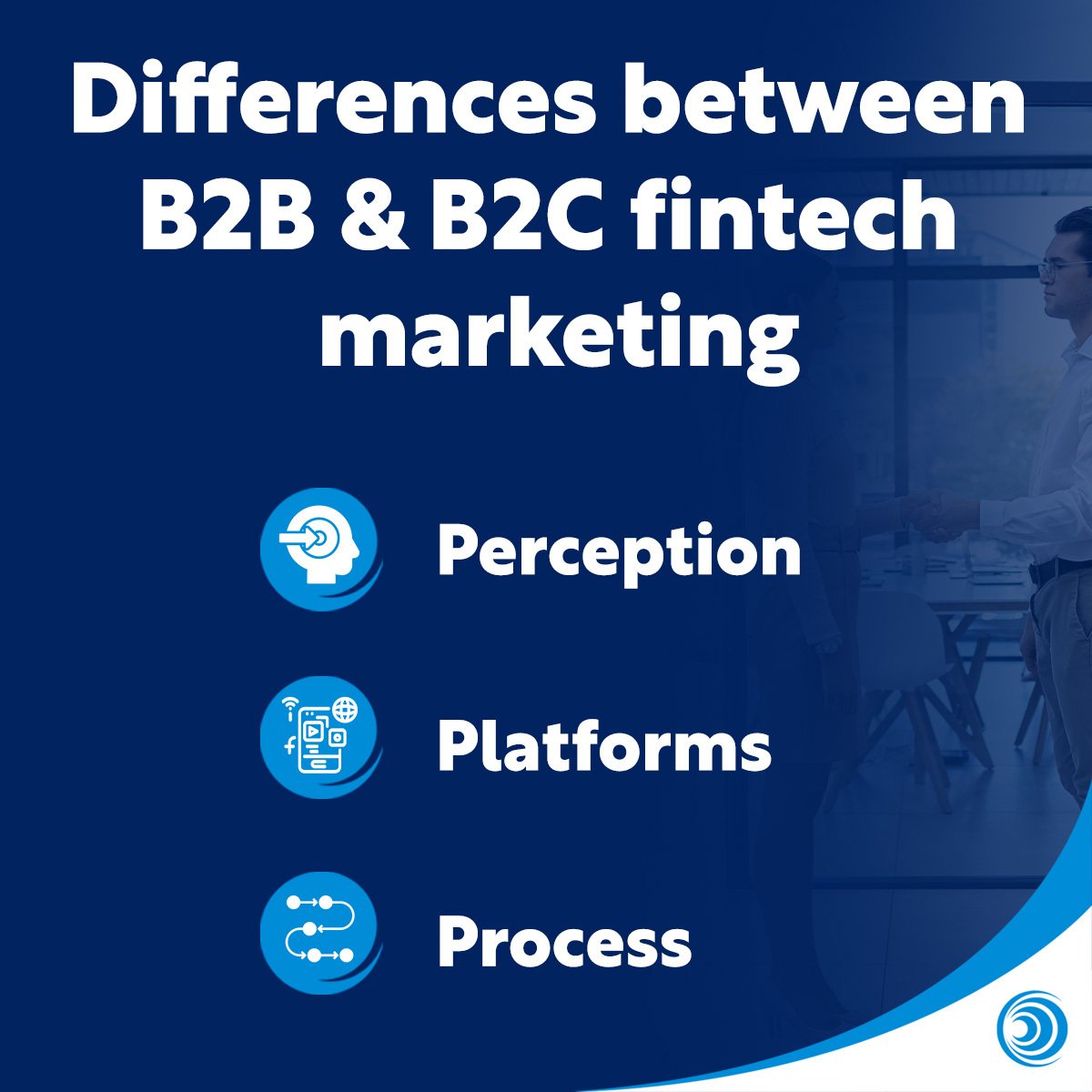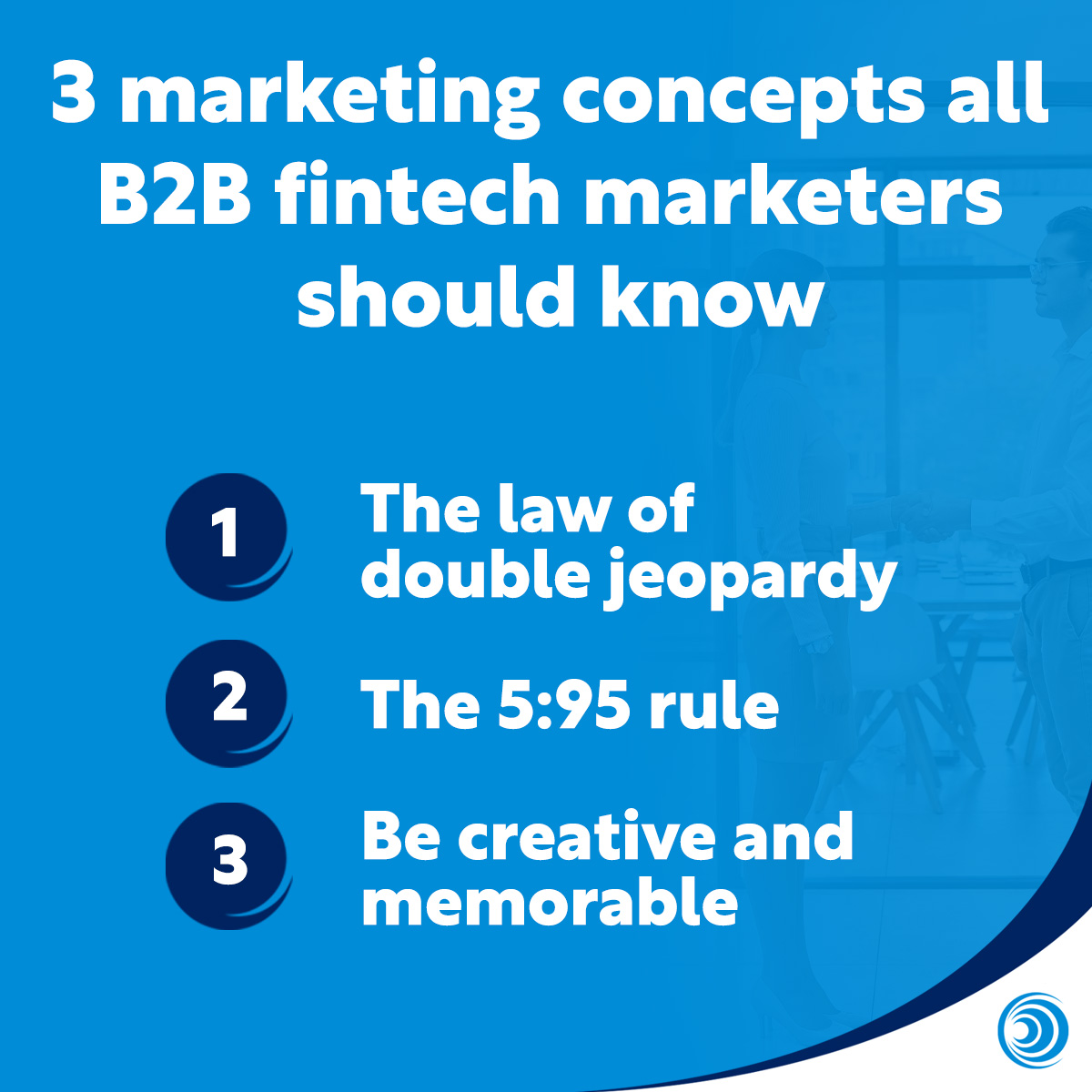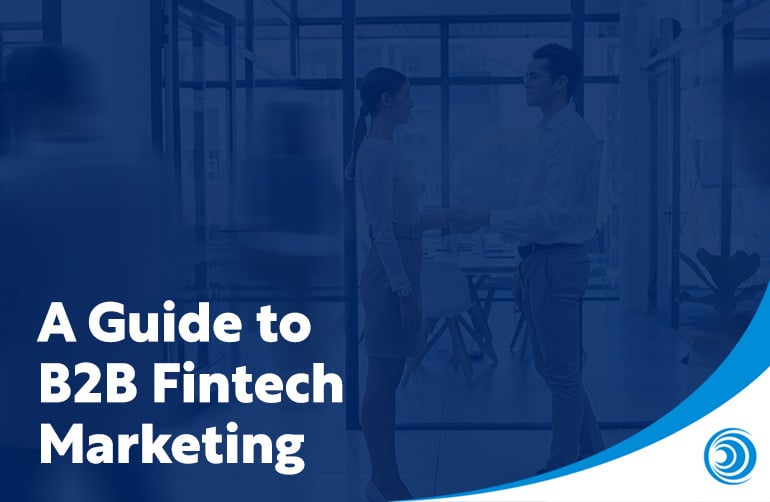- PAY360 – What’s Next For Fintech & Payments? - August 26, 2025
- Video Marketing – Our Lessons Learned in Lockdown - August 26, 2025
- 5 Green Marketing Strategies - August 26, 2025
The business-to-business (B2B) fintech market is often described as its own ‘ecosystem’.
But defining its exact boundaries and size are difficult. It covers different types of services, interdependencies, and complexities.
So, how do we navigate this landscape? And should regular fintech marketing strategies and tactics apply to it?
Let’s take a look at closer look at these questions, and more.
Defining and measuring the B2B industry
Many think B2B is a relatively niche category.
In fact, the opposite is true. It underpins the world’s economy. And by some measures it may even exceed the B2C market in size.
This is becoming increasingly evident with B2B commerce sales set to exceed $2.6 trillion in 2024.
It becomes more complicated to define by companies working in both B2B and B2C.
They sometimes refer to themselves as business-to-many (B2M) organisations. One team might manage each market. Or there might be separate teams for each category.
What is B2B fintech marketing?
B2B fintech marketing is any marketing activity by – or for – fintech companies that target other businesses.
Like marketing in other categories or industries, it has some unique features. However, it also has many generalsimilarities with other types of marketing.
It’s easier to understand these differences and similarities by comparing and contrasting them with B2C fintech marketing.
B2B fintech marketing vs B2C fintech marketing
Some people confidently assert that B2B marketing is completely different to B2C marketing. Others state the opposite…
The truth is somewhere in between.
But these are widely divergent extremes, so exactly where in between matters.
Let’s see if we can find it.
Similarities between B2B and B2C fintech marketing
Marketing science has provided many remarkable insights in recent years.
Here are just three of them:
- The double jeopardy law: Small brands have less buyers (the first jeopardy) who buy less often (the second jeopardy) than big brands
- The law of duplicate purchase: In any given category, different brands’ customers naturally overlap in ways which reflect their respective market shares. This means that all brands share more customers with larger brands in their category than they do with smaller ones in it
- The natural monopoly law: Brands with larger market shares naturally gain a monopoly over a larger share of light category customers
Like all other theories, these laws are relevant across and within industries, including B2B.
So, both B2B or B2C fintech brands will grow if they are distinct from their competitors. Successful fintech brands should be physically and mentally (or digitally) available (i.e., be top of mind and readily accessible to buyers) and consistently gain new customers.
Differences between B2B and B2C fintech marketing

Even though both obey many of the same marketing laws, there are three main differences between B2B and B2C fintech marketing:
1. PERCEPTION (/what)
Many marketers think marketing for their particular industry is unique.
To a degree, this is true. After all, you need to understand your industry, competitors and customers closely in order to be able to market your brand.
B2B is no different.
In general, many B2B marketers, including those within the fintech industry, believe that B2B marketing is mainly about conveying lots of information to existing and potential customers.
And in B2B companies, sales teams often rule the roost. They see marketing primarily as a tactical tool for bringing in immediate leads.
The role of marketing as a lead generator is obviously important. But it can be counter-productive for B2B marketing teams to focus too much on short-term lead-generation goals and bombard audiences with too much information.
Understanding and dealing with the prevailing perception of B2B marketing is crucial for B2B fintech marketers. It will help you frame your strategies to your colleagues across sales, marketing and elsewhere in the company.
2. Platforms (/where)
Though there is some crossover, B2C and B2B audiences are generally found in different places.
For example, B2C fintech companies may find Instagram or TikTok a great social media platform to advertise on or utilise for organic outreach. Here, adverts can sit nicely alongside associated lifestyle-related posts
B2B audiences, by comparison, exist within a relatively small number of professionally orientated channels. This is because of the relatively small size of their audience and the kind of industry-specific spaces (physical and digital) they frequent.
For paid search adverts, for example, LinkedIn and Microsoft Advertising (formerly Bing ads) should be considered for many B2B fintechs.
In-person networking can also be important and taking a structured approach to this should be part of a fintech marketing plan.
So, in summary, B2B marketers can focus on a narrower audience than B2C marketers. Therefore they have a smaller range of platforms and channels to focus on.
3. Process (/how)
The decision-making process is different for consumers and businesses in some ways.
Firstly, most consumer choices are made by individuals. They don’t need to examine or explain their purchasing decisions to anyone.
Unless they are married….
The B2B decision-making process, on the other hand, often involves multiple players and longer sales cycles. On average, 7 people are involved in the B2B buying process.
Although C-suite employees in B2B may often – but not always – have the final say on purchase decisions, non-C-suite employees also heavily influence it.
Research shows that nearly half of employees report a high-level of work engagement in business decisions.
So, in theory, your B2B fintech marketing strategy should take into consideration the multiple players involved.
This would mean maintaining consistent, data-driven content that prioritises clarity of purpose and value substance over style.
This could be especially important when selling, for example, a compliance-related service such as a KYC or AML solution to a fintech rather than a service such as issuer processing, which could be broader and more consultative to get a start-up to market.
However, in practice, it isn’t quite so straightforward…
After all, B2B and B2C customers are the same people with the same psychology. Though the buying context is different, the marketing laws underlining purchases are not.
So, the process for marketing to B2B customers has both crossover and differences with B2C. The below concepts should explain these further.
3 marketing concepts all B2B fintech marketers should know
Below are some key concepts that should help guide your B2B fintech strategies.

1. The law of double jeopardy: Focus on gaining new customers over brand loyalty
The law of double jeopardy is one of most established laws in marketing science. It has been observed across industries (including B2B) and countries.
It states that brand loyalty is generally fixed to market penetration (the number of buyers within a given period). This means that brands with larger market shares will have higher loyalty on average, and brands with smaller shares will have less.
This is not to say that brand loyalty is not important. It can be increased, but – barring rare exceptions – only within the bounds set by the penetration a company has.
The main way brands grow in size and loyalty is by increasing penetration. A strategy that focused exclusively on brand loyalty would be doomed to fail.
B2B fintechs, like over fintechs, should therefore always focus on gaining a larger market share.
But how do they do this? Read on to find out…
2. The 5:95 rule: Think long-term
Despite what many marketers think, most customers – whether B2B or B2C – don’t spend that much time thinking about brands.
Furthermore, they don’t think that deeply about brands.
Heartbreaking…
Most B2B buyers are only in the market to buy 5% of the time – meaning that at any given time, 95% of them are not be ready to convert.
This is where the importance of mental and physical availability comes in.
In other words, your brand should be generally available when it matters.
In the context of B2B fintech where there is no physical product to pick off the self, physical availability could mean how easy you are to get hold and communicate with. It could also mean how easy it is to find your content or relevant educational assets.
So, rather than developing a Minority Report-style ability to catch your potential clients during the 5% of time they are in market, it’s more practical to send reminders of your brand to them throughout the 95% of the time.
Then, when your clients come into market, your brand is mentally available for them to recall.
3. Be creative and memorable: Learn from B2C!
If 95% of B2B marketing will be seen by an audience not in market, then it needs to be memorable. This way, it will be mentally available to them when they are in market.
The key to being memorable is to be creative.
Research by the LinkedIn B2B Institute found that an incredible 81% of B2B video advertisements fail to register, failing to grab viewers attention or drive brand recall.
This is likely down to B2B advertising being too information-heavy. Most potential customers won’t remember the details of what they see of your brand. They’ll simply remember you.
B2B fintech consumers are also B2C fintech consumers. So the chances of them being responsive to B2C fintech brands’ marketing strategies is high.
Your main goal is not to bombard them with technical details about your fintech product or service. It is simply to remind them of your existence.
You do this by marketing to them in a memorable way. Explore different aspects of your offering in a way that shows you are different and creative. Potential customers are likely to project those positive attributes onto how easy or helpful you would be to work with.
B2B fintech marketing strategy
Whilst there is no one-size-fits-all marketing strategy out there for all B2B fintech companies, there are some general principles that can inform.
1. Distinctiveness over differentiation
You should primarily focus on being distinct. Prioritising standing out from your competitors in an obvious and memorable way is more important that differentiating the nuanced, complicated differences between you and them.
2. Prioritise finding new customers over increasing customer loyalty
Customer loyalty is important, but it is mostly dictated by your market share. You should naturally provide good value and customer service to you existing customers.
In order to grow, you need to bring in new customers. This means focusing on attracting new customers is more important than marketing to your existing ones. (Again, more important does not mean the latter is unimportant).
3. Think long-term
B2B customers aren’t in market for long. So, short-term marketing campaigns are unlikely to to bring much value.
You should focus on increasing your brand’s likelihood of being mentally and physically available for the maximum number of B2B clients at the most relevant time (i.e., during the 5% of time when they are in market).
This means your strategy should be linked to having the long-term goal of refreshing memory structures of your potential clients.
In-house or outsource?
Marketing can be difficult. There are many platforms, strategies, and tactics to learn.
Sometimes your in-house team can cover this. Other times, it helps to get an outside view on things.
We are a fintech marketing agency based in London. We have years of experience and knowledge on both fintech and marketing – especially B2B fintech marketing.
Conclusion
B2B fintech marketing covers marketing for a broad range of industries, products and services.
It is underpinned by the same basic laws of all marketing. To grow, brands must make themselves mentally available so that they can gain new customers. They can do this by making sure they are memorable.
B2B marketing for fintech does have a few important category-specific quirks. These include the perception people within the industry have of it, the platforms its audience uses, and the decision-making process buyers go through.
Otherwise, it is like other marketing. And in this respect, it can learn a lot from B2C on how to be creative and memorable.
